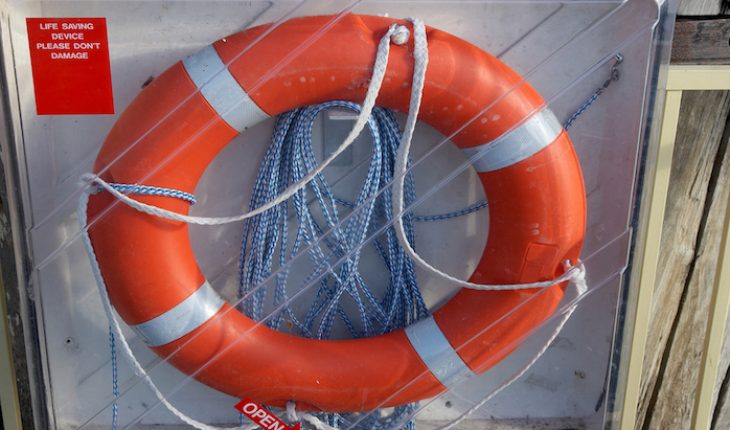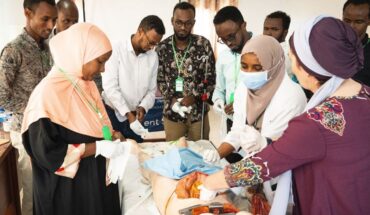‘When it comes to safety for patients in the operating theatre, it’s not always the ‘big spends’ that make the biggest difference. For instance, the World Health Organization has developed a one-page safety checklist for surgical teams which maximises the chances of a good outcome – regardless of the geographic or economic setting.
This Surgical Safety Checklist – essentially a communications tool which emphasizes key steps to take before, during and immediately after an operation, is mandatory for NHS professionals in the UK. It includes asking everyone to introduce themselves by name and outline their role before any procedure begins, and counting swabs, sharps and instruments at the end of the procedure to make sure that nothing has been left in the wound by accident.
The principle may sound simple but the results speak for themselves. Hospitals that follow the Surgical Safety Checklist have much better outcomes and fewer surgical accidents. A study run across eight countries around the world found that use of the checklist cut mortality rates by nearly half, and reduced complication rates by over a third following surgery.
But using the Checklist effectively is a lot more complicated than following a shopping list – and still an aspiration for many hospital teams performing surgery in middle and low-income countries. And this is not for lack of will or awareness. Motivation and skill level among surgical professionals in Africa and other low-resource settings is very high. In many cases, it is simply a lack of resources, structured implementation and most importantly, local adaptation.
As the honorary clinical adviser at Lifebox, it is my job to help medical teams in low GDP countries successfully introduce the Checklist. Because our goal is long-term systems support, not short-term impact, we focus our efforts on working with doctors and nurses in their own communities and countries. We actually grew directly out of WHO‘s safe surgery work, and our Chair, the surgeon and author Atul Gawande, led development of the Checklist. The team published their landmark findings and essential criteria for safer surgery in the New England Journal of Medicine in 2009.
Since launching in 2011, our work has focused on long-term introduction of the Checklist, with emphasis on closing some of the specific gaps that make using it – and achieving safer surgery – a different kind of challenge in lower-resource settings.
For instance, a pulse oximeter (an essential device for monitoring oxygen levels during anaesthesia) is the only piece of physical equipment on the Checklist, and missing from more than 70,000 operating theatres worldwide. We distribute an affordable environment-appropriate oximeter that uses rechargeable batteries, along with a safe anaesthesia education programme; we’re also developing a technical programme around reduction of surgical site infection, which we hope will include new essential surgical instruments.
In the last five years, Lifebox has facilitated distribution of more than 13,000 oximeters around the world – making surgery and anaesthesia safer for an estimated 10 million patients.
We’ve worked with surgery and anaesthesia communities in over 100 countries, helping surgical teams improve their cooperation and reporting skills – essential if mistakes are to be picked up quickly. This can be difficult in very hierarchical structures where the only qualified doctor in an operating theatre may be the surgeon. Other team members may not feel able to speak out if they are not encouraged to do so, and the Checklist ‘team introductions’ can really help with that.
Lack of resources is also a major stumbling block.
I have seen this for myself hospital settings outside of the U.K. A few weeks ago, I was in Ethiopia meeting with surgical and anaesthetic teams in four hospitals. Two of these hospitals had no running water in their operating theatre areas and electricity supply was unreliable. Although the nurses were correctly checking that their equipment had passed through sterilisation, the procedure itself was compromised because the autoclaves were frequently not working.
So we are breaking the Checklist down into stages that create the right situation for implementation. In the case of the hospitals in Ethiopia, we are piloting our Clean Cut programme to reduce surgical site infection. One component of this is looking at how we can improve sterilisation procedures even in the absence of basic essentials.
Possibilities we might consider as simple solutions in the U.K. – like is encouraging the use of disposable equipment – quickly falls down because of cost implications and fragmented logistics. Some hospitals use sterilising fluids but again this is not a reliable way to ensure that instruments are clean and has to be used appropriately with a reliable supply chain. Work is being undertaken by other groups to develop steam autoclaves that are currently being trialled in low-income settings and these could be helpful in the future if this can be scaled. So for Lifebox, process and more consistent use of proven measures to reduce infection (such as antibiotic stewardship and integrity of drapes) are as important as equipment-based interventions.
The Checklist is a gold standard to work towards, and we’ve used it to make surgery safer for an estimated 10 million patients. But with more than 5 billion people worldwide still without access to safe and affordable surgery, we know we have a long way to go. That is the goal of the Lifebox Foundation and we are working hard to bring that day a little closer.
Follow Dr Ed Fitzgerald on Twitter: https://twitter.com/DrEdFitzgerald
Follow Lifebox on Twitter: https://twitter.com/SaferSurgery
Support safer surgery and anaesthesia worldwide: www.lifebox.org
- A checklist for life - 19th August 2016






